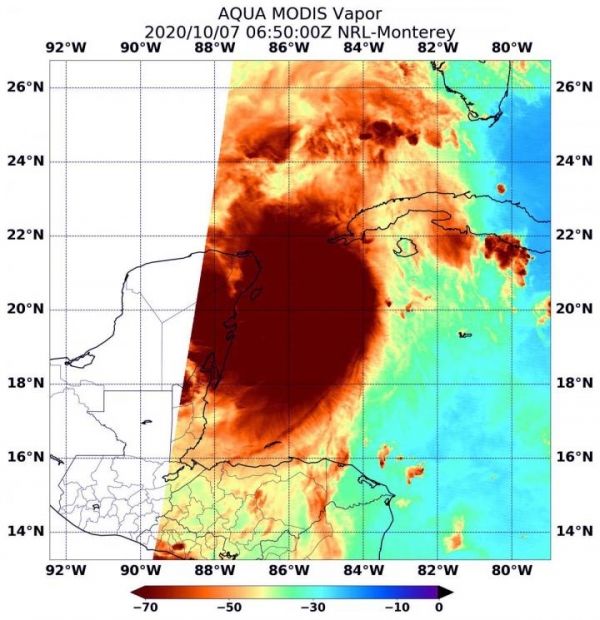When NASA’s Aqua satellite passed over the Caribbean Sea on Oct. 7, it gathered water vapor data on Hurricane Delta as Mexico’s Yucatan continues to feel its effects.
Water vapor analysis of tropical cyclones tells forecasters how much potential a storm has to develop. Water vapor releases latent heat as it condenses into liquid. That liquid becomes clouds and thunderstorms that make up a tropical cyclone. Temperature is important when trying to understand how strong storms can be. The higher the cloud tops, the colder and stronger the storms.
NASA’s Aqua satellite passed over Delta on Oct. 7 at 2:50 a.m. EDT (0650 UTC), and the Moderate Resolution Imaging Spectroradiometer or MODIS instrument gathered water vapor content and temperature information. NASA’s Aqua satellite is one in a fleet of NASA satellites that provide data for hurricane research.
Read more at: NASA/Goddard Space Flight Center
On Oct. 7 at 2:50 a.m. EDT (0650 UTC), NASA's Aqua satellite found highest concentrations of water vapor (brown) and coldest cloud top temperatures were around Hurricane Delta's center. Cloud top temperatures in those storms were as cold as or colder than minus 90 degrees Fahrenheit (minus 67.7 degrees Celsius). Delta was moving over Mexico's Yucatan Peninsula. (Photo Credit: NASA/NRL)


